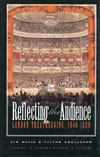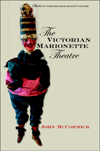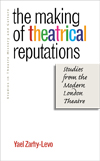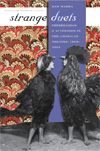Reflecting the Audience
“Reflecting the Audience is pioneer scholarship because it calls for the necessity of starting over again, at Square One, in order to make an entirely new assessment of the subject…One of the best, most interesting, and most useful studies of the Victorian theatre that I have seen in many a year.”—Joseph Donohue, professor of English, University of Massachusetts, Amherst
This innovative work begins to fill a large gap in theatre studies: the lack of any comprehensive study of nineteenth-century British theatre audiences. In an attempt to bring some order to the enormous amount of available primary material, Jim Davis and Victor Emeljanow focus on London from 1840, immediately prior to the deregulation of that city's theatres, to 1880, when the Metropolitan Board of Works assumed responsibility for their licensing. In a further attempt to manage their material, they concentrate chapter by chapter on seven representative theatres from four areas: the Surrey Theatre and the Royal Victoria to the south, the Whitechapel Pavilion and the Britannia Theatre to the east, Sadler's Wells and the Queen's (later the Prince of Wales's) to the north, and Drury Lane to the west.
Davis and Emeljanow thoroughly examine the composition of these theatres' audiences, their behavior, and their attendance patterns by looking at topography, social demography, police reports, playbills, autobiographies and diaries, newspaper accounts, economic and social factors as seen in census returns, maps and transportation data, and the managerial policies of each theatre.
Acknowledgments
Introduction
Part One
The Surrey Siders: London Audiences South of the Thames
1. The Surrey and the Victoria Theatres
Part Two
Orientalism and Social Condescension: Constructing London's East End Audiences
Introduction
2. The Pavilion Theatre, Whitechapel
3. The Britannia Theatre
Part Three
Myth and Nineteenth-Century Theatre Audiences
Introduction
4. Sadler's Wells Theatre
5. The Queen's/ Prince of Wales's Theatre
Part Four
"Theatric Tourists" and the West End
6. The West End
7. A National Drama: A National Theatre and the Case of Drury Lane
Conclusion
Notes
Bibliography
Index






